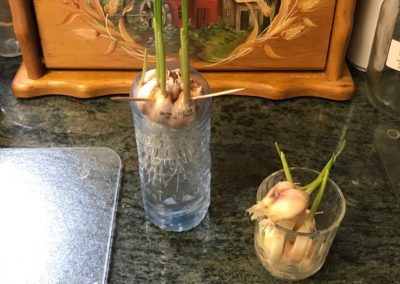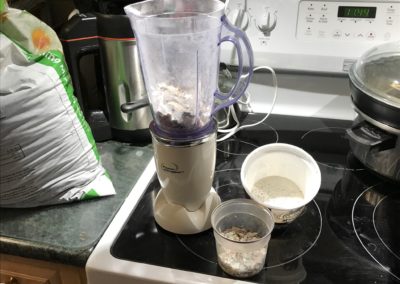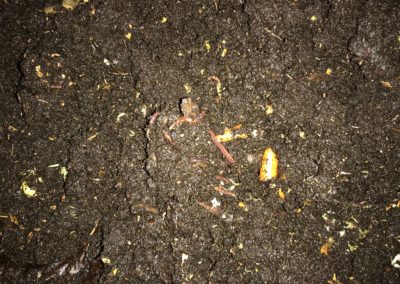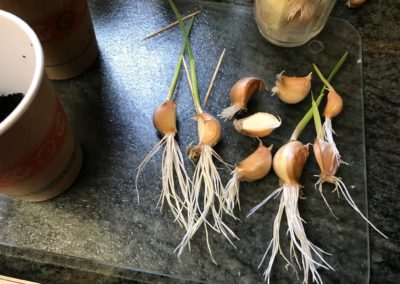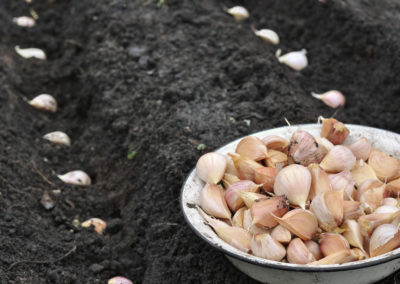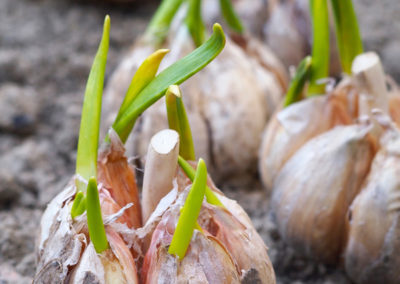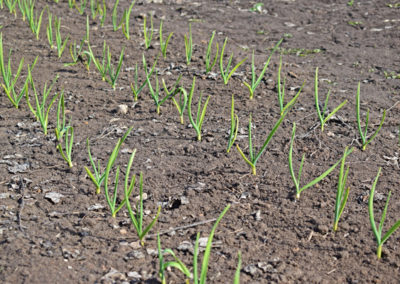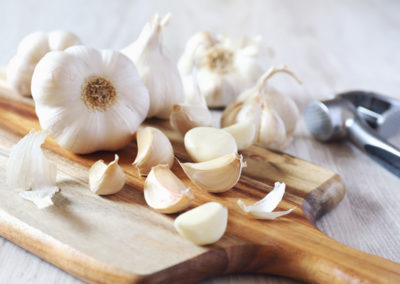
Herb Gardening
Guest Contributor: Rev. Dagmar Mikkila
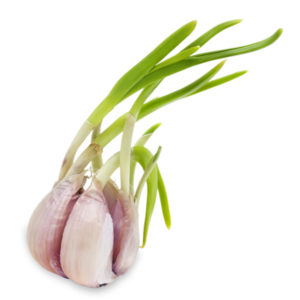
Depending on where you live growing food and herbs happens all year round or only during certain seasons.
One of the most important foods that you can plant in your garden is garlic.
Garlic is a culinary delight and/or a it can be used for its natural health benefits, which you can check out online.
Usually in the northern climates garlic is planted in the late fall, a few weeks before the ground freezes. It can usually be harvested in June, but if you missed the planting season last year, you can start growing garlic it in water.
There are a couple of ways to do this One way is to use a small glass with just enough water to cover the bottoms of the garlic bulb broken up into the individual pieces.
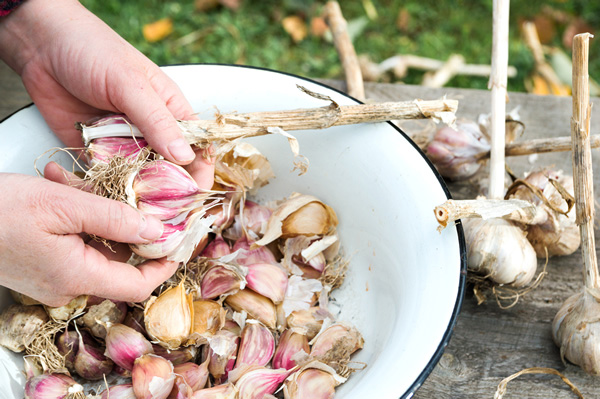
I clean the outer layer of skin and leave the inner layer of skin on the individual pieces. Another way is to take a garlic bulb, again clean the outer layer of skin and just loosen the individual pieces a bit. Put 3 toothpicks to hold the cluster above the water. I cut off the top of a water bottle enough to let the bottom of the garlic bulb sit in the water. After about 6 days, you will see roots growing that are starting to give off green shoots. After about 10 days, plant the individual pieces, but only plant the big pieces because they will give you large garlic bulbs. The small pieces yield small garlic bulbs. If you do this, make sure you start with organic garlic. From two garlic bulbs, you will probably get 15-20 garlic bulbs when they are harvested. You can also plant the individual pieces into pots and grow them on your balcony. Just make sure the pieces are planted about 4 inches apart. This leaves room for the bulbs to grow.
You will have to wait about 6 or 7 months to harvest, but each piece will give you a whole garlic bulb. Usually when the leaves die the bulb is ready to be dug up. During the growing season you will see garlic scapes growing. You will want to make sure you cut them off or else they will use the growing garlic bulb for their food. Scapes can be used in stir-fries or pestos, etc.
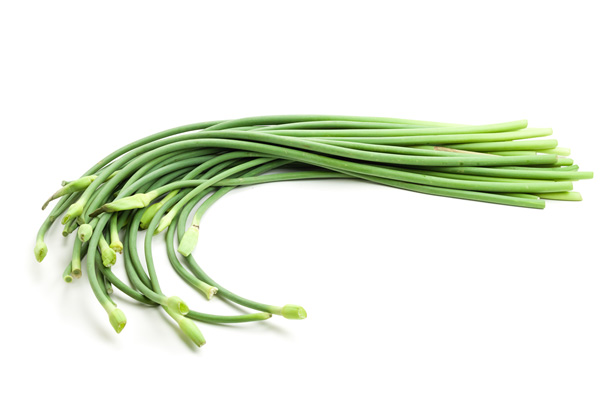
5-17 April 2020 Update from Dagmar
GARLIC
What do you do when Mother Nature is not co-operating? Go with the flow! Plan B.
On April 5th, I put the garlic cloves in water as shown in the first picture. As you can see by the roots and shoots in the second picture, they were ready to be planted on the 17th.
I wanted to plant them outside, not in the greenhouses, but it is still too cold, and we are getting snow squalls, although it doesn’t really stick.
The garden centers are all closed because of the lockdowns, so the peat pots that I would normally buy cannot be purchased. Yesterday while I was in the grocery store, the idea came to me to look for some paper cups in which to plant the garlic. I found paper cups that have a plant-based bio-lining and are compostable. See the 3rd picture.
Each cup is about 3 1/2 – 4 inches in diameter, which is a perfect size for planting one garlic clove in the middle and allowing it to grow.
When planting outside, you would usually allow about 4” between the individual pieces. Later when the weather does warm up to the point where there will be no danger to the green shoots, I can take the cup, cut out the bottom, and plant the cup and garlic into the ground.
Preparing Your Soil
As compared to 50 years ago, today’s soil is quite depleted of nutrients so any help you give it improves your food and benefits you. I buy organic food so the additions to the soil are organic. I save egg shells and crush them up into smaller pieces. These add calcium to the soil. I save banana peels, which, amongst other things, add potassium to the soil. I add some used coffee grounds that provide nitrogen. I also add some Andesite to my soil when gardening. Andesite is a gray to black volcanic rock with between about 52 and 63 percent (by weight) silica (SiO2). It is from the lava of the Andes mountains. Using lava was an idea that came to me a couple of years back when the volcanos were erupting a lot. Volcanic lava is nutrient dense.
I also add some organic compost to the potting soil. I have a worm composting bin in my kitchen containing composting worms, not your regular garden or fishing bait worms. These worms are called red wrigglers. They only get fed organic vegetables from when I am preparing my meals. They are somewhat fussy about what they eat. For example, they should not be given onions or garlic nor anything spicy or peppery hot .
Here you see a picture of the egg shells crushed, the grinder I grind them and the banana peels in, and the end powdery result which I sprinkle with some coffee grounds before putting into the soil that I use to plant the seeds etc. as you can see, everything can be done in your kitchen.
See immune recipe using garlic >>
Privacy Policy || Report Technical Problems || Permission to Quote || Job Opportunities
Copyright Dr. Ingrid Naiman @ 2014-2020. All Rights Reserved.
For permission to quote, please contact the Institute for Invisible Epidemics.
Poulsbo, Washington, USA.


